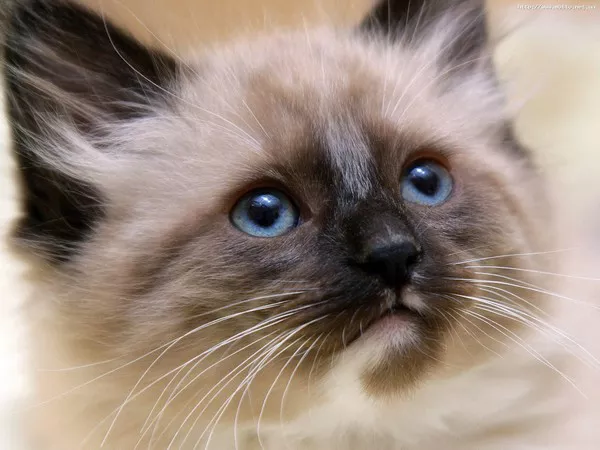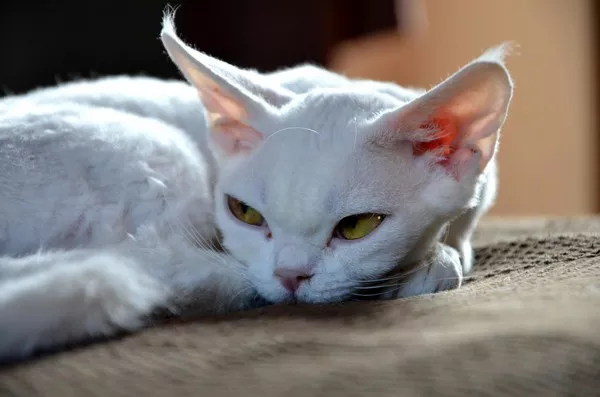Siamese cats are one of the most recognizable and beloved breeds, known for their striking appearance and vocal nature. Maintaining an ideal weight is crucial for their health and longevity. This article delves into the ideal weight range for male Siamese cats and offers comprehensive feeding tips to ensure your feline friend remains healthy and happy.
Ideal Weight for Male Siamese Cats
Understanding the Weight Range
The ideal weight for a male Siamese cat typically falls between 8 to 12 pounds (3.6 to 5.4 kg). However, this range can vary depending on the cat‘s age, genetic background, and overall health. Some males might naturally be on the larger or smaller side of this spectrum. It’s important to remember that weight alone isn’t the sole indicator of health; muscle tone, bone structure, and overall condition also play critical roles.
Factors Influencing Weight
Several factors can influence the weight of a Siamese cat:
Genetics: Some Siamese cats may have a genetic predisposition to be larger or smaller than the average.
Age: Younger cats and kittens are generally lighter, and their weight increases as they grow. Senior cats might lose weight due to various health issues.
Diet and Nutrition: The type and amount of food play a significant role in a cat’s weight.
Activity Level: Active cats tend to have leaner bodies compared to sedentary ones.
Health Conditions: Certain medical conditions can lead to weight loss or gain.
Feeding Tips for Male Siamese Cats
Choosing the Right Food
Selecting the appropriate food is the first step in maintaining your Siamese cat’s ideal weight. Here are some tips:
High-Quality Protein: Siamese cats are obligate carnivores, meaning they require a diet rich in animal protein. Look for cat foods with high-quality protein sources like chicken, turkey, or fish as the primary ingredient.
Balanced Nutrients: Ensure the cat food contains a balanced mix of proteins, fats, carbohydrates, vitamins, and minerals. Taurine, an essential amino acid for cats, should be included.
Avoid Fillers: Avoid foods with excessive fillers like corn, wheat, and soy, which provide little nutritional value and can contribute to weight gain.
Feeding Schedule
Establishing a consistent feeding schedule helps regulate your cat’s metabolism and prevent overeating:
Regular Mealtimes: Feed your cat at the same times each day. This helps maintain a routine and can prevent begging or overeating.
Portion Control: Measure the food portions according to the feeding guidelines provided by the food manufacturer. Adjust the portions based on your cat’s activity level, age, and health.
Avoid Free Feeding: Instead of leaving food out all day, offer meals at specific times. Free feeding can lead to overeating and weight gain.
Wet Food vs. Dry Food
Both wet and dry foods have their advantages and disadvantages. A combination of both might be the best approach:
Wet Food: Provides more moisture, which is beneficial for urinary tract health and can help keep your cat hydrated. It’s also generally lower in calories, which can help with weight management.
Dry Food: More convenient and can help with dental health by reducing plaque buildup. However, it is calorie-dense, so portions should be carefully controlled.
Treats and Snacks
Treats should be given sparingly to avoid unnecessary weight gain:
Healthy Treat Options: Opt for healthy treats such as freeze-dried meat or specially formulated cat treats with limited ingredients.
Moderation: Treats should make up no more than 10% of your cat’s daily caloric intake.
Training Tools: Use treats as a reward during training sessions rather than as regular snacks.
See Also: Can Burmese Cats and Dogs Eat Eggs?
Monitoring Your Cat’s Weight and Health
Regular Weigh-Ins
Regularly weighing your cat can help you track their weight and notice any significant changes that might indicate health issues:
Monthly Weigh-Ins: Weigh your cat once a month and keep a record. Use a digital scale for accuracy.
Vet Visits: Regular veterinary check-ups are essential. Your vet can provide a more comprehensive health assessment and help you determine if your cat’s weight is within a healthy range.
Body Condition Scoring
In addition to weighing, use a body condition scoring (BCS) system to assess your cat’s body condition:
Visual Assessment: Look at your cat from above and the side. A healthy cat should have a visible waistline when viewed from above and a slight abdominal tuck when viewed from the side.
Palpation: Feel your cat’s ribs. You should be able to feel the ribs without pressing too hard, but they should not be overly prominent.
Adjusting the Diet
If you notice that your cat is gaining or losing weight, adjust their diet accordingly:
Reduce or Increase Portions: If your cat is overweight, reduce the portion sizes slightly. If underweight, increase the portion sizes.
Switch Foods: Consider switching to a weight management formula if your cat is struggling with weight issues.
Consult Your Vet: Always consult your veterinarian before making significant changes to your cat’s diet.
Common Health Issues Related to Weight
Obesity
Obesity is a common issue in domestic cats and can lead to various health problems:
Diabetes: Overweight cats are at a higher risk of developing diabetes.
Arthritis: Excess weight puts additional strain on the joints, leading to arthritis.
Heart Disease: Obesity increases the risk of heart disease and other cardiovascular issues.
Liver Disease: Overweight cats are more susceptible to hepatic lipidosis, a serious liver condition.
Underweight
Being underweight can also be problematic:
Nutritional Deficiencies: An underweight cat may not be receiving adequate nutrition, leading to deficiencies in essential vitamins and minerals.
Hyperthyroidism: A common cause of weight loss in older cats, hyperthyroidism requires veterinary diagnosis and treatment.
Gastrointestinal Issues: Conditions such as inflammatory bowel disease can lead to weight loss and poor nutrient absorption.
Special Dietary Considerations
Age-Specific Diets
As your Siamese cat ages, their dietary needs will change:
Kittens: Require a diet rich in protein and fat to support growth and development.
Adults: Need a balanced diet that maintains their weight and health.
Senior Cats: May benefit from diets lower in calories but higher in easily digestible proteins to maintain muscle mass.
Health-Specific Diets
Certain health conditions may require special diets:
Renal Diets: Cats with kidney disease often require a diet low in phosphorus and high in high-quality protein.
Diabetic Diets: Cats with diabetes benefit from diets high in protein and low in carbohydrates to help regulate blood sugar levels.
Homemade Diets
Some cat owners prefer homemade diets, but these require careful planning:
Nutritional Balance: Ensure the diet includes all essential nutrients. Consult with a veterinary nutritionist to formulate a balanced diet.
Supplements: Homemade diets often require supplements to meet all of a cat’s nutritional needs.
Conclusion
Maintaining an ideal weight is crucial for the health and well-being of your male Siamese cat. By understanding the factors that influence weight, choosing the right food, establishing a consistent feeding schedule, and regularly monitoring your cat’s weight and body condition, you can help ensure your cat lives a long, healthy, and happy life. Always consult your veterinarian for personalized advice and before making any significant changes to your cat’s diet or feeding routine. By providing proper care and nutrition, you can help your Siamese cat thrive.
























